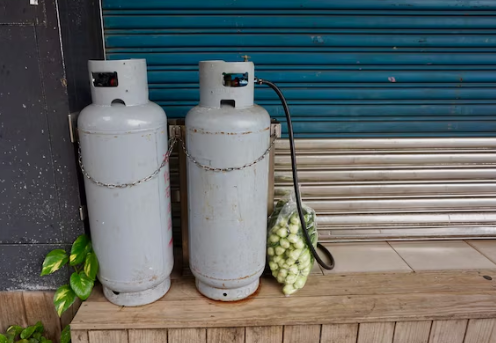
Gas cylinders are a common part of our daily lives, whether at home, in workplaces, hospitals, restaurants, or industrial sites. They are used to store and transport gases such as LPG (liquefied petroleum gas), oxygen, acetylene, carbon dioxide, nitrogen, and more. Despite their convenience, gas cylinder can pose serious hazards if not handled properly. Fire outbreaks, explosions, and toxic leaks are some of the dangers associated with gas cylinders.
To minimize these risks, strict gas cylinder safety regulations must be followed. Whether you are a homeowner using LPG in your kitchen or a business owner running an industrial setup, understanding and applying safety practices is crucial. In this article, we will cover the key safety regulations, handling tips, storage rules, and emergency measures related to gas cylinders.
Why Gas Cylinder Safety Matters
Gas cylinder-related accidents can result in property damage, injuries, and even fatalities. According to global safety reports, a significant number of industrial accidents are linked to poor gas cylinder handling. The main dangers include:
- Explosions due to high pressure or leaks.
- Fires from contact with flames or sparks.
- Toxic exposure from inhaling gases like chlorine or ammonia.
- Asphyxiation from gases displacing oxygen in enclosed spaces.
- Physical injuries caused by falling or improperly secured cylinders.
By following gas cylinder safety regulations, these risks can be reduced significantly. Safety is not just a legal obligation; it is also a responsibility to protect lives and property.
General Gas Cylinder Safety Regulations
Here are the fundamental safety rules you should always follow when dealing with gas cylinders:
1. Purchase Cylinders from Authorized Suppliers
Always buy your gas cylinder from a licensed and recognized supplier. Counterfeit or substandard cylinders may not meet safety standards and can cause severe accidents. Check for official seals, labels, and certification marks before accepting delivery.
2. Store Cylinders in a Well-Ventilated Area
Never keep gas cylinders in confined spaces. Proper ventilation prevents gas accumulation in case of leaks. The storage area should be open, dry, and away from direct sunlight, flames, or heat sources.
3. Keep Cylinders Upright and Secured
Gas cylinders should always be stored vertically and secured with chains or stands to prevent them from falling. Laying cylinders horizontally can increase the risk of leaks and explosions.
4. Separate Full and Empty Cylinders
Empty and full cylinders should be stored separately to avoid confusion. Mark empty cylinders clearly and return them to the supplier immediately.
5. Use Correct Regulators and Valves
Never attempt to use makeshift regulators or connections. Always use the appropriate regulator and valve designed for the specific gas type. This ensures proper flow control and reduces leak risks.
Home Gas Cylinder Safety Regulations
LPG cylinders are commonly used in households for cooking. To keep your home safe, follow these rules:
- Place the cylinder in an upright position in your kitchen or designated area.
- Do not store cylinders near stoves, heaters, or other fire sources.
- Regularly check the rubber hose and regulator for cracks, wear, or leaks.
- Replace damaged hoses and regulators immediately.
- Turn off the regulator knob after every use.
- When you smell gas, do not switch on lights or electrical appliances. Open windows for ventilation and call your gas supplier.
Following these basic home safety rules can protect you and your family from dangerous gas-related accidents.
Industrial Gas Cylinder Safety Regulations
Industries use different types of gas cylinders such as oxygen, acetylene, nitrogen, and carbon dioxide. Each has its own risks, so strict workplace safety regulations must be enforced:
1. Proper Training for Workers
Employees handling gas cylinders should receive training in safe handling, storage, and emergency response. Untrained staff should not operate or move cylinders.
2. Use Protective Equipment
Workers must wear protective gear such as gloves, safety glasses, and footwear when handling gas cylinders.
3. Transport with Caution
Always use trolleys or cylinder carts when transporting gas cylinders. Never roll or drag them on the ground.
4. Fire Safety Precautions
Fire extinguishers should be placed near storage areas. Smoking and open flames must be strictly prohibited.
5. Follow Color Codes and Labels
Industrial cylinders are usually color-coded for easy identification. Ensure that labels are clear, readable, and never tampered with. For example, oxygen cylinders are often black with a white shoulder, while acetylene cylinders are maroon.
Medical Gas Cylinder Safety Regulations
Hospitals and healthcare facilities use medical gases like oxygen, nitrous oxide, and carbon dioxide. These require even stricter handling because patients’ lives depend on them.
- Oxygen cylinders must be stored away from flammable materials.
- Cylinders should be tested regularly for leaks and pressure compliance.
- Ensure regulators and flow meters are in good working condition.
- Medical staff must be trained to handle and store cylinders properly.
- Backup cylinders should be readily available in case of emergencies.
Gas Cylinder Storage Regulations
The way gas cylinders are stored plays a huge role in preventing accidents. Follow these storage guidelines:
- Store cylinders in a cool, dry, and ventilated place.
- Avoid exposure to direct sunlight or extreme temperatures.
- Keep storage areas clean and free from combustible materials.
- Cylinders containing different gases should be stored separately. For instance, oxygen should not be stored near flammable gases like acetylene.
- Use warning signs like “No Smoking” or “Flammable Gas” near storage zones.
Gas Cylinder Transport Regulations
When transporting cylinders, safety measures must be strictly followed:
- Always use approved cylinder trolleys or cradles.
- Secure cylinders during transportation to prevent rolling.
- Keep valve caps on during transit.
- Do not transport cylinders in passenger cars unless designed for it.
- Avoid exposure to high heat during transportation.
Gas Cylinder Maintenance Regulations
Cylinders must be regularly inspected and maintained to ensure safety:
- Check valves, regulators, and hoses for wear and tear.
- Conduct periodic leak tests using soapy water (never with an open flame).
- Follow inspection dates and hydrostatic testing schedules set by regulatory authorities.
- Do not attempt to repair damaged cylinders yourself. Always return them to authorized service centers.
Emergency Safety Regulations for Gas Cylinders
In case of an emergency such as a leak or fire:
- Evacuate the area immediately.
- Do not use electrical switches or flames near the leak.
- Inform your gas supplier or emergency services.
- Use fire extinguishers designed for gas fires (Class B or C).
- If safe, shut the cylinder valve and move it to an open space.
Legal Requirements and Standards
Different countries have laws and standards governing gas cylinder safety. For example:
- OSHA (Occupational Safety and Health Administration) in the USA sets rules for industrial cylinder use.
- ISO Standards provide international guidelines for cylinder manufacturing and testing.
- Local Gas Authorities regulate household and commercial LPG cylinder distribution.
Always check and comply with your country’s specific gas cylinder safety regulations to avoid legal penalties and ensure safety.
Common Mistakes to Avoid with Gas Cylinders
Many accidents happen due to negligence or ignorance. Avoid these common mistakes:
- Storing cylinders in basements or enclosed spaces.
- Using expired or damaged regulators.
- Mixing up full and empty cylinders.
- Handling cylinders without protective gear.
- Attempting DIY repairs on valves or leaks.
Best Practices for Long-Term Gas Cylinder Safety
- Educate everyone in your home or workplace about gas safety.
- Keep emergency numbers handy.
- Schedule regular inspections and maintenance.
- Install gas leak detectors in kitchens or storage rooms.
- Maintain proper records of cylinder usage and testing dates.
Conclusion
Gas cylinders are essential in households, industries, and healthcare facilities, but they also carry potential hazards if mishandled. Following gas cylinder safety regulations is not just about compliance; it is about safeguarding lives and property. From purchasing and storage to transportation and emergency handling, every step requires caution and responsibility.
By applying the safety measures outlined in this article—such as proper storage, regular inspections, correct usage of regulators, and adherence to legal standards—you can minimize risks and create a safe environment for everyone around you.
Remember, gas cylinder safety is a shared responsibility. Stay informed, stay alert, and stay safe.

